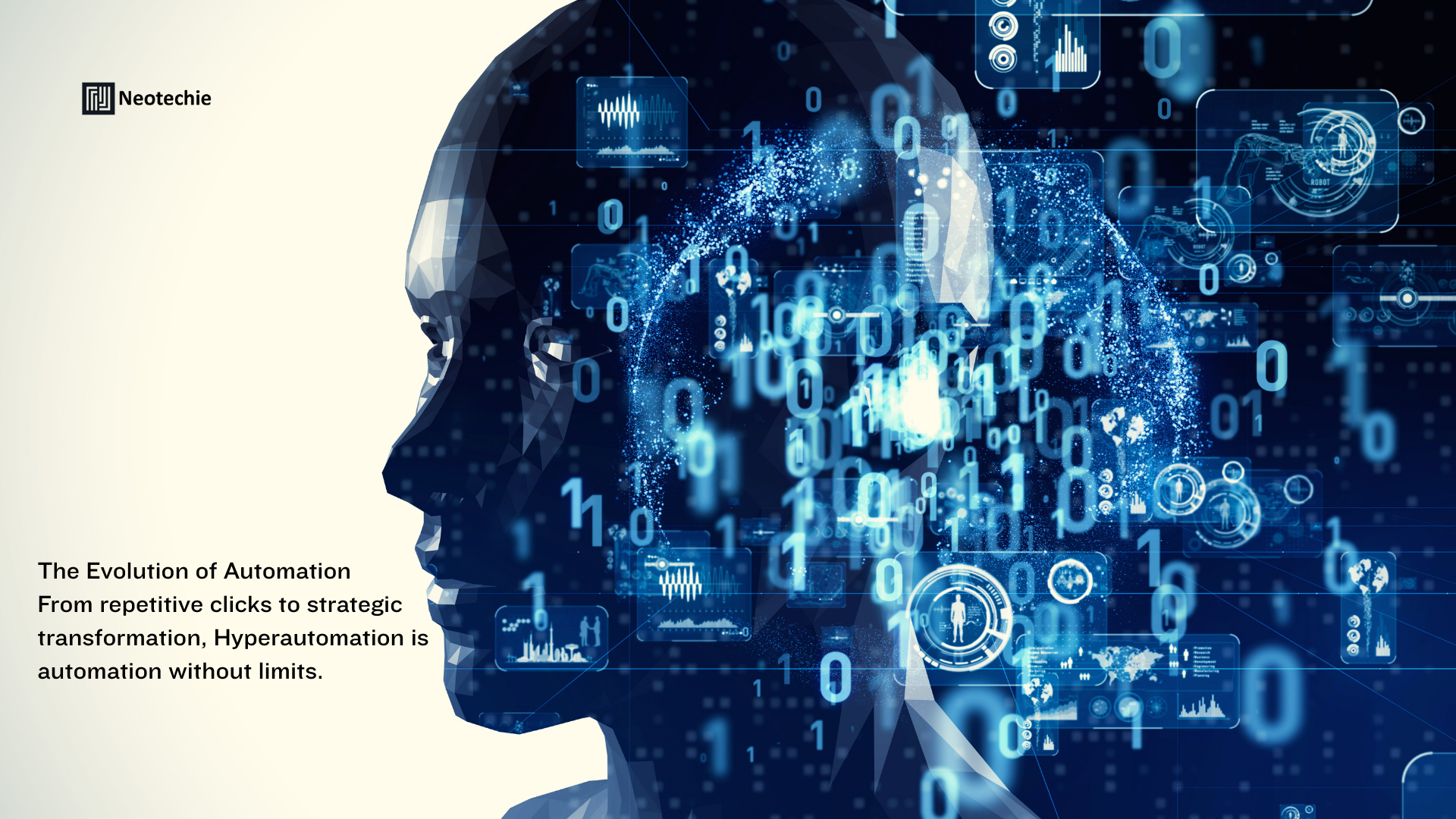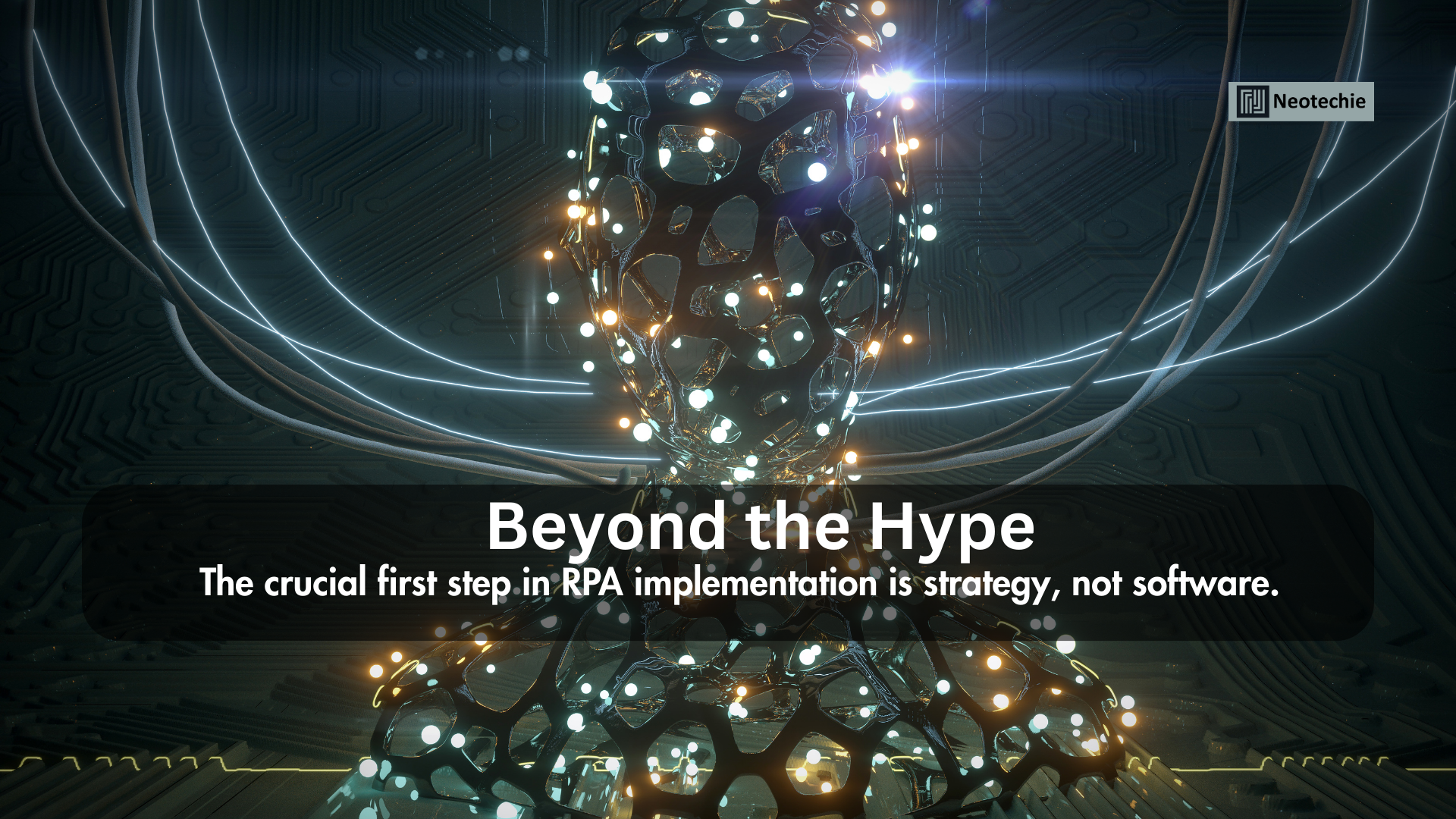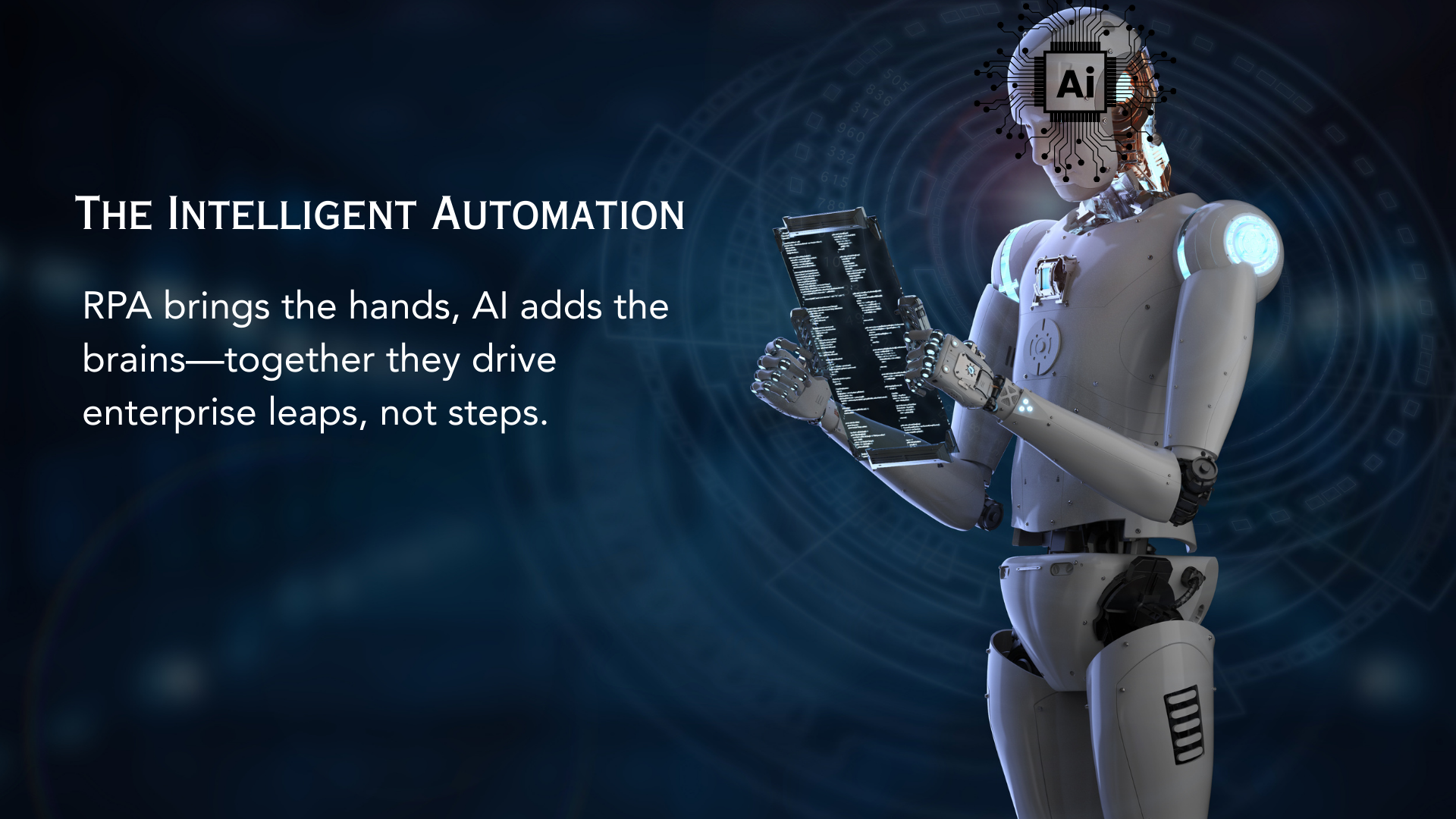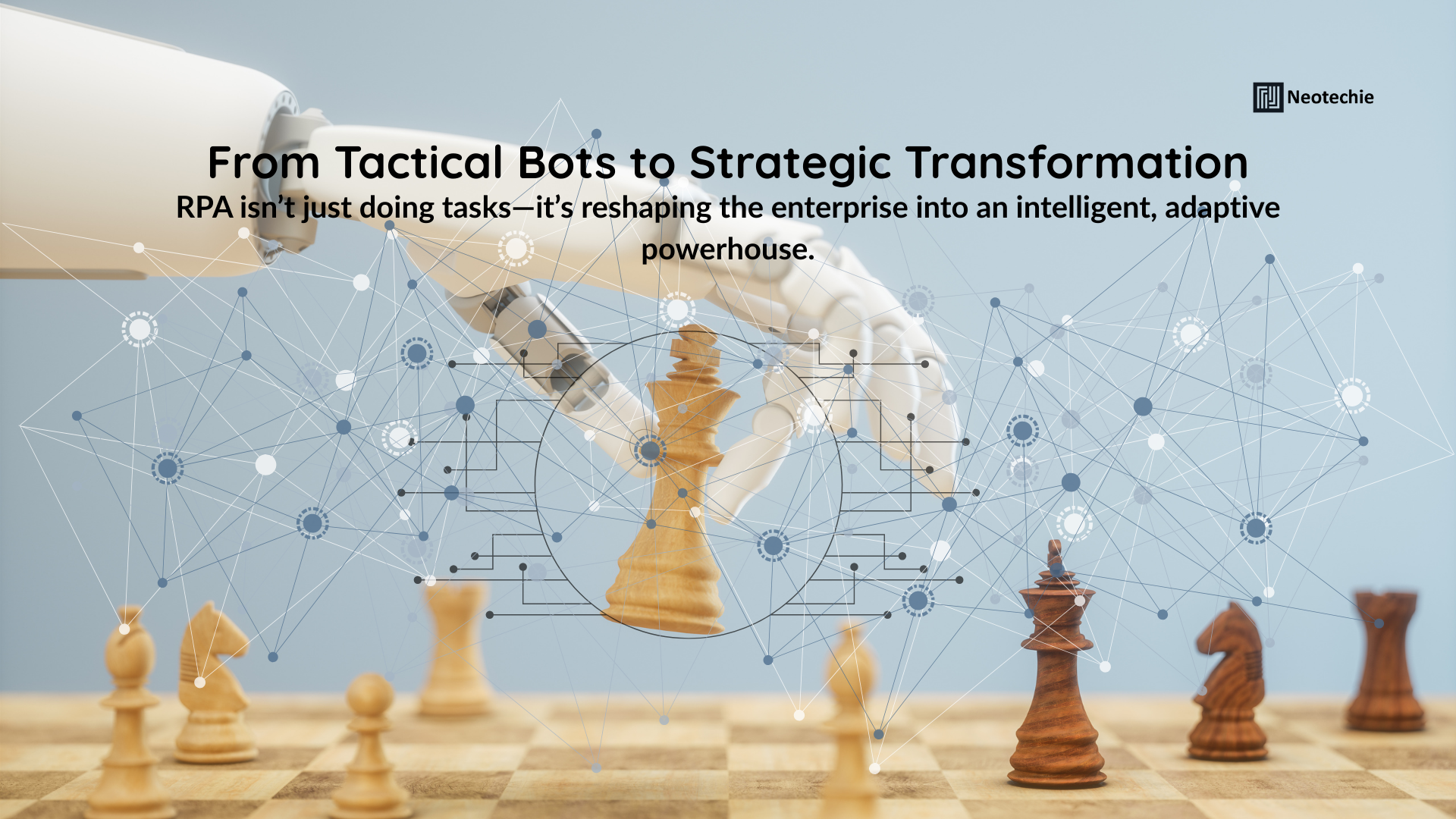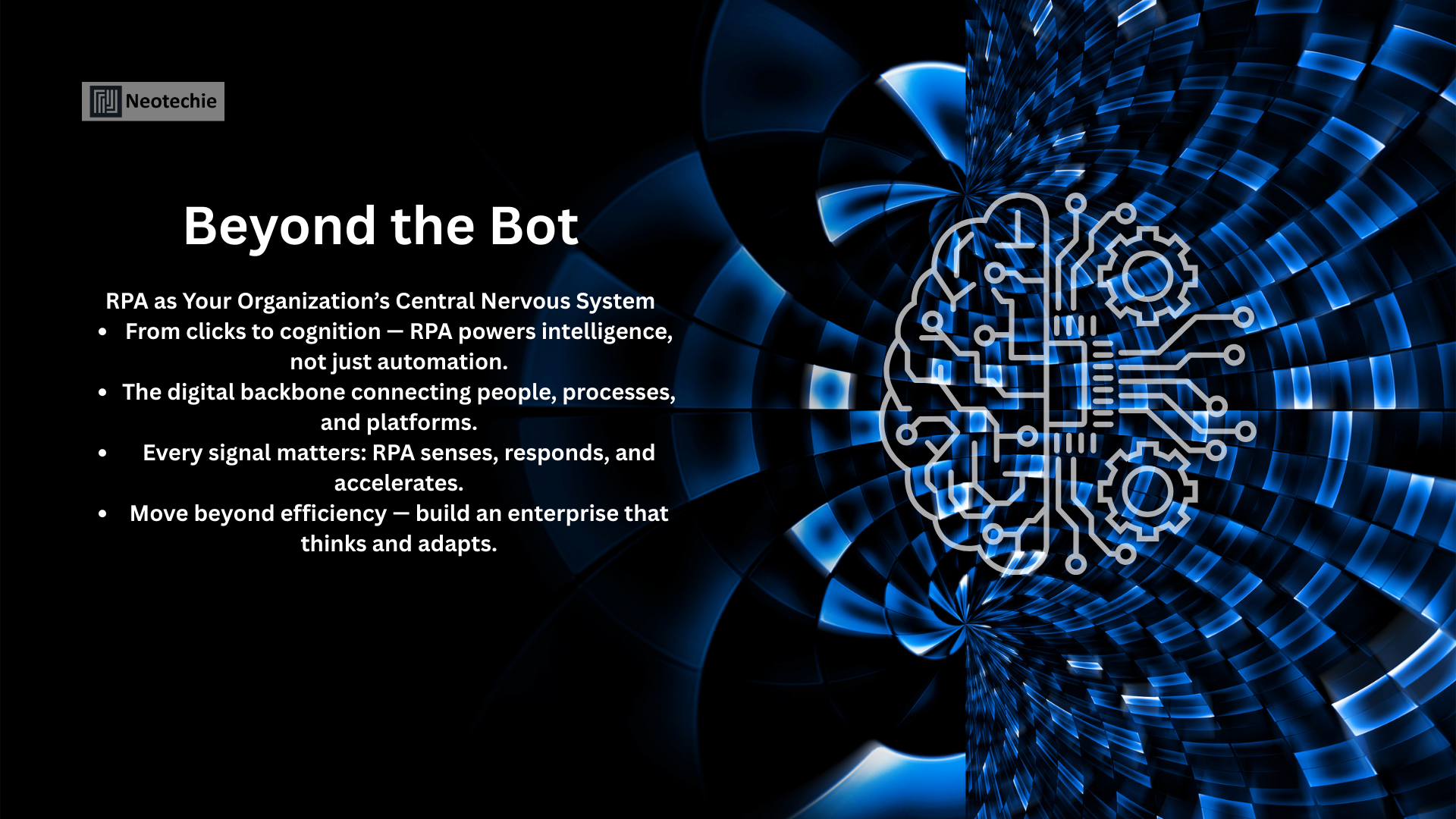In a world relentlessly driven by efficiency and innovation, simply automating isolated tasks is no longer enough. The initial wave of Robotic Process Automation (RPA) proved its immense value by taking over repetitive, rule-based duties, offering quick wins and significant cost savings. However, the true frontier of enterprise efficiency lies in Hyperautomation—a comprehensive, business-driven strategy that uses RPA as its indispensable starting point to orchestrate a symphony of advanced technologies, completely redesigning and optimizing entire value chains. This isn’t just about doing things faster; it’s about reinventing how work gets done, delivering unprecedented digital transformation.
What is Hyperautomation? A Symphony of Technologies
Hyperautomation is more than just a buzzword; it’s a paradigm shift in how organizations approach process automation. Gartner defines it as a disciplined, business-driven approach that organizations use to rapidly identify, vet, and automate as many business and IT processes as possible. It involves the coordinated use of multiple technologies, tools, and platforms, including:
- Robotic Process Automation (RPA): The “hands and feet” that execute tasks and interact with systems.
- Artificial Intelligence (AI) and Machine Learning (ML): The “brain” that enables cognitive capabilities like understanding unstructured data, making predictions, and intelligent decision-making.
- Process Mining and Task Mining: The “eyes and ears” that discover, analyze, and monitor processes to identify automation opportunities and bottlenecks.
- Intelligent Business Process Management Suites (iBPMS): The “orchestrator” that manages and coordinates complex, end-to-end workflows involving both human and automated steps.
- Low-Code/No-Code Platforms: Tools that accelerate the development of applications and integrations, making automation accessible to a broader range of users.
- Analytics and Dashboards: For continuous monitoring, performance measurement, and real-time insights to drive ongoing optimization.
Unlike traditional RPA, which often focuses on automating individual tasks, Hyperautomation strategy aims for end-to-end process reinvention. It seeks to create a holistic, intelligent, and self-improving automation ecosystem that spans the entire organization, delivering unparalleled operational efficiency and business agility.
Why RPA is the Essential Starting Point for Hyperautomation
RPA’s role in Hyperautomation is foundational. It’s the practical executor that bridges the gap between digital systems. Without RPA, the insights gleaned from process mining, the decisions made by AI, and the orchestrations from iBPMS would often lack a direct means of execution within legacy systems.
RPA: The Executor and Integrator
- Hands-On Interaction: RPA bots mimic human actions, interacting with existing user interfaces and applications (web, desktop, legacy systems) without requiring complex API integrations. This makes it the ideal tool to quickly automate tasks that are often part of larger, fragmented processes.
- Rapid Deployment: RPA tools allow for relatively quick development and deployment of bots, offering immediate benefits and demonstrating early ROI. This initial success builds momentum and confidence for broader automation initiatives.
- Data Bridge: RPA can extract data from one system and input it into another, acting as a crucial bridge between disparate applications that may not otherwise communicate. This capability is vital for integrating the various components of a hyperautomation stack.
Think of RPA as the crucial “last mile” delivery system for the intelligence and optimization strategies derived from other hyperautomation tools. It provides the mechanism for actually doing the work, guided by the collective intelligence of the other technologies.
How Hyperautomation Drives End-to-End Process Reinvention
The true power of Hyperautomation lies in its ability to look beyond individual tasks and completely redesign entire value chains. This is a journey that moves from mere automation to comprehensive process optimization.
1. Discover: Unearthing the Truth with Process Mining and Task Mining
The first step in any meaningful reinvention is understanding the current state. This is where Process Mining and Task Mining become indispensable.
- Process Mining: This technology analyzes digital footprints left in IT systems (e.g., event logs from ERP, CRM) to reconstruct and visualize actual process flows. It reveals bottlenecks, deviations from standard procedures, and rework loops that might otherwise remain hidden.
- Task Mining: This focuses on individual user interactions, capturing desktop activities to understand how tasks are truly performed. It uncovers variations, manual steps, and micro-tasks that are ideal candidates for RPA.
Why it matters: This discovery phase is critical for avoiding the common pitfall of “automating broken processes.” Instead of simply speeding up an inefficient workflow, hyperautomation ensures that the process is first optimized, simplified, and potentially completely redesigned before automation is applied. This data-driven insight provides a factual basis for process reinvention.
2. Analyze & Design: The Brains Behind the Operations
Once processes are understood, the analysis and design phase begins, heavily leveraging AI, ML, and Analytics.
- AI for Decision Making: AI components analyze the discovered processes to identify where intelligent decision points can be automated. This moves beyond simple if/then rules to complex judgment calls based on data patterns. For instance, AI can be used to automatically categorize incoming customer emails or assess risk in financial transactions.
- ML for Prediction and Adaptation: Machine Learning algorithms analyze historical data to predict future outcomes (e.g., demand forecasting, predictive maintenance) and adapt to changing conditions. This allows for proactive automation, where bots are triggered not just by predefined rules but by predicted events.
- iBPMS for Orchestration: Intelligent Business Process Management Suites (iBPMS) then take these redesigned, AI-augmented processes and orchestrate them. They manage the flow of work between human employees, RPA bots, AI models, and other systems, ensuring seamless execution across the entire value chain. This provides a holistic view and control over complex, hybrid workflows.
Why it matters: This combination provides the “brain” for the entire operation. It transforms processes from rigid, reactive sequences into flexible, intelligent, and adaptive systems. It enables automation to handle unstructured data, manage exceptions autonomously, and even learn and improve over time—key capabilities for true end-to-end automation.
3. Automate & Integrate: The Execution Layer
This is where RPA, often augmented by low-code/no-code platforms, comes into play.
- RPA as the Executor: RPA bots execute the optimized, AI-driven steps identified in the design phase. They perform data entry, system navigation, report generation, and data validation, interacting with various applications efficiently and accurately.
- Low-Code/No-Code Platforms: These platforms accelerate the creation of new applications, user interfaces, or integrations needed to support the redesigned processes. They empower citizen developers to contribute to the automation effort, further broadening the scope of what can be automated.
Why it matters: This stage brings the redesigned process to life. RPA provides the speed and accuracy for execution, while low-code platforms reduce the time and cost associated with developing new digital components. The integration of these tools ensures that the automated process is not isolated but seamlessly woven into the existing IT landscape.
4. Monitor & Optimize: The Continuous Improvement Loop
Hyperautomation is not a one-time project; it’s a continuous journey.
- Real-time Analytics: Dashboards and analytics tools provide real-time insights into the performance of automated processes, tracking KPIs like Straight-Through Processing (STP) rate, cycle time reduction, process accuracy, and business outcomes.
- AI-Driven Optimization: AI can be used to monitor process performance and suggest further optimizations or identify new automation opportunities. This creates a self-improving loop where the automation itself drives further efficiency gains.
Why it matters: This continuous monitoring ensures that the benefits of hyperautomation are sustained and amplified over time. It allows organizations to quickly identify and address new bottlenecks, adapt to changing business requirements, and continually refine their automated processes for maximum impact.
Neotechie’s Role in Your Hyperautomation Journey
Looking to embark on this transformative journey, a strategic partner is essential. Neotechie, with its proven expertise in Intelligent Automation and digital transformation, is uniquely positioned to guide businesses through the complexities of Hyperautomation.
1. Strategic Advisory and Process Intelligence 💡
Neotechie begins by helping you understand your current operational landscape. Their RPA consulting includes:
- Process Discovery and Assessment: Leveraging advanced techniques (akin to process and task mining principles) to identify inefficiencies, bottlenecks, and the optimal candidates for automation and reinvention, ensuring you don’t automate a broken process.
- Hyperautomation Roadmap Development: Collaborating with your teams to craft a comprehensive strategy that prioritizes initiatives, defines the right blend of technologies, and aligns with your overarching business objectives.
2. Building the Intelligent Core with RPA + AI/ML 🤖🧠
Neotechie’s strength lies in integrating the “hands and feet” of RPA with the “brain” of AI/ML.
- Intelligent Automation Implementation: They deploy robust RPA solutions that serve as the foundation, then integrate advanced AI and Machine Learning capabilities (like NLP for unstructured data and Computer Vision for document processing) to handle cognitive tasks. This is the crucial step in enabling higher Straight-Through Processing (STP) rates and reducing reliance on manual intervention.
- Custom Solution Development: For unique business challenges, Neotechie can develop tailored automation solutions that fit seamlessly into your existing IT ecosystem, ensuring maximum impact across your value chain.
3. Orchestration and Continuous Optimization 🔄
Beyond initial deployment, Neotechie provides the support needed for long-term success.
- Managed Automation Services: They offer ongoing monitoring, maintenance, and optimization of your automation solutions, ensuring high performance and adaptability to evolving business needs.
- Performance Analytics: Implementing dashboards and reporting mechanisms to track key KPIs, providing the insights needed for continuous process improvement and strategic decision-making.
By partnering with Neotechie, businesses can confidently navigate the complexities of Hyperautomation, transforming fragmented processes into cohesive, intelligent, and highly efficient value chains. This strategic collaboration empowers organizations to achieve true digital transformation, unlocking unprecedented levels of operational excellence, driving innovation, and securing a sustainable competitive advantage in the global market. The future of business is automated, intelligent, and interconnected, and Hyperautomation is the blueprint for achieving it.

